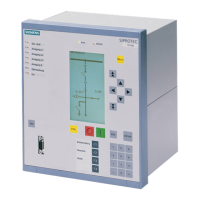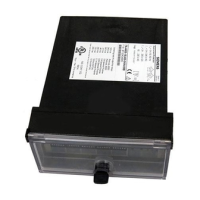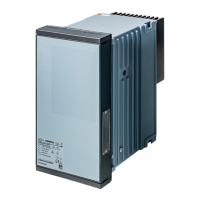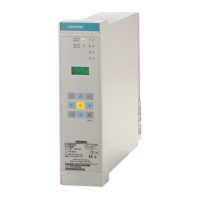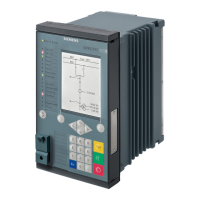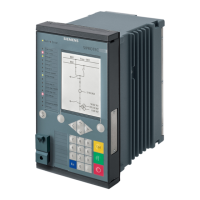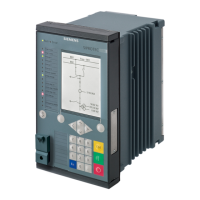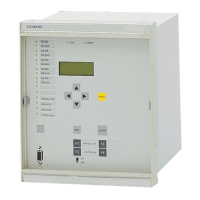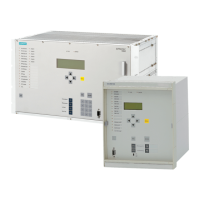Current Balance
During normal system operation (i.e. the absence of a fault), symmetry among the input currents is expected.
The symmetry is monitored in the device with a magnitude comparison. The smallest phase current is
compared to the largest phase current. Asymmetry is recognized if:
|Ι
min
| / |Ι
max
| < BAL. FACTOR I as long as Ι
max
> BALANCE I LIMIT
Thereby Ι
max
is the largest of the three phase currents and Ι
min
the smallest. The balance factor BAL. FACTOR
I (address 2905) represents the permitted imbalance of the phase currents while the limit value BALANCE I
LIMIT (address 2904) is the lower limit of the operating range of this monitoring (see Figure 2-65). The
dropout ratio is about 97 %.
After a settable time (5 s - 100 s) this malfunction is signaled as
Fail I balance
“ (no. 163).
[stromsymmetrieueberwachung-020313-kn, 1, en_US]
Figure 2-65 Current symmetry monitoring
Voltage Balance
During healthy system operation, a certain balance of the voltages can be assumed. The monitoring of the
measured values in the device checks this balance. The smallest phase-to-phase voltage is compared to the
largest. Imbalance is recognized if
|V
min
| / |V
max
| < BAL. FACTOR V solange |V
max
| > BALANCE V-LIMIT
Where V
max
being the largest of the 3 phase-to-phase voltages and V
min
the smallest. The balance factor BAL.
FACTOR V (address 2903) represents the permitted imbalance of the conductor voltages while the limit value
BALANCE V-LIMIT (address 2902) is the lower limit of the operating range of this monitoring (see
Figure 2-66). The dropout ratio is about 97 %.
After a settable time, this disturbance is signaled with
Fail V balance
(no. 167).
Functions
2.14 Monitoring Functions
SIPROTEC 4, 7SD80, Manual 151
E50417-G1100-C474-A2, Edition 02.2018
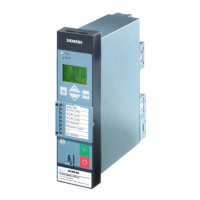
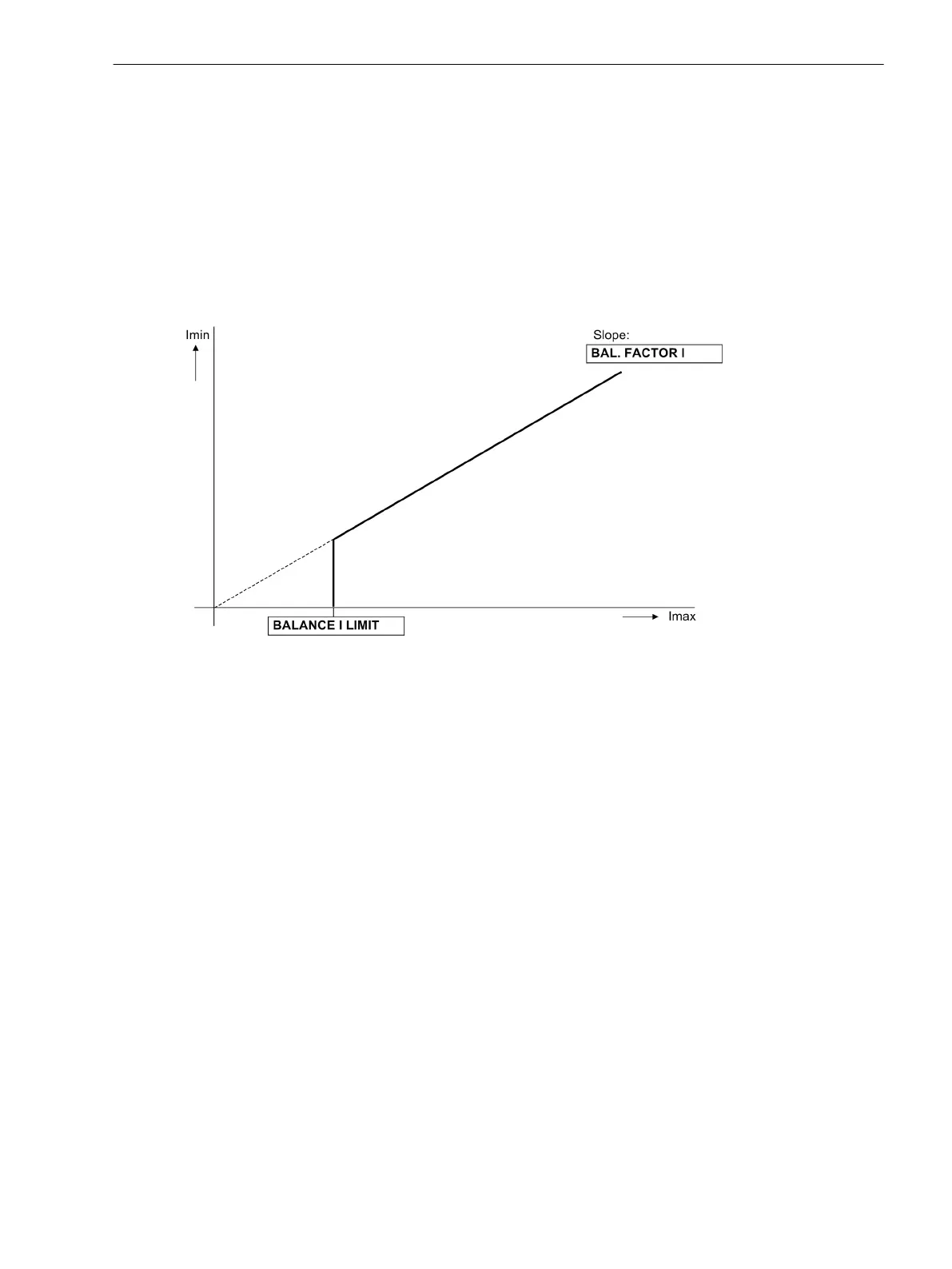